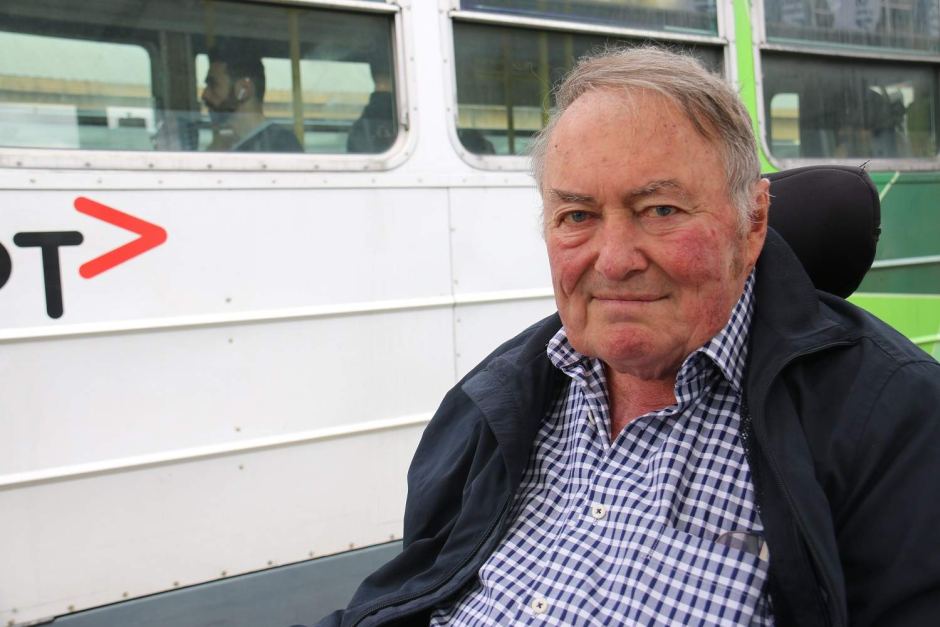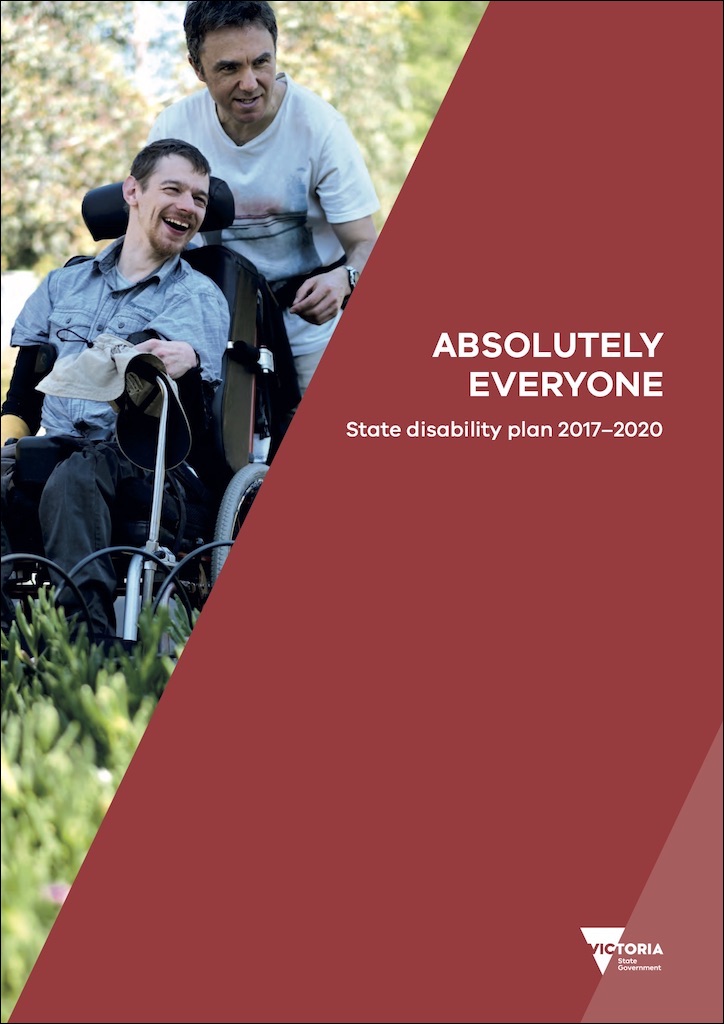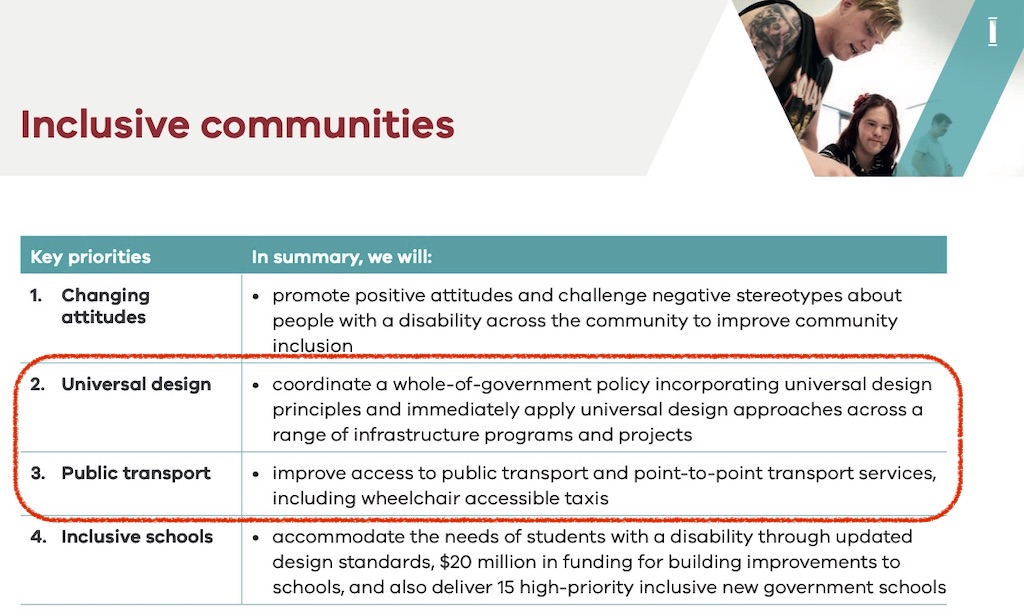How can we offer equity of access for people with disabilities?
People with disabilities deserve the freedom to move safely, conveniently and enjoyably around Yarra, e.g. to roll on handcycles or mobility scooters to shops, activities or their friends houses, or to travel further with level access public transport stops.


People with disabilities include people with:
- limited mobility, e.g. use a cane, wheelchair, or handcycle,
- neuro-cognitive disorders, neuro-developmental and/or intellectual disabilities,
- blindness or low vision, and
- deafness or hard of hearing.
Status of infrastructure
Unfortunately, many footpaths in Yarra are too narrow, obstructed, sloping, bumpy, or discontinuous. In addition, most public transport stops aren’t level access. Neighbouring councils have similarly poor infrastructure, leading to protests, such as this in the City of Moreland:

The poor status of infrastructure was highlighted by the Victorian Auditor-General ‘s Office report on accessibility of tram services in October 2020.
The Disability Discrimination Act 1992 (DDA) requires that all tram stops must be fully compliant with the Disability Standards for Accessible Public Transport 2002 (DSAPT) by 31 December 2022 and all trams must be DSAPT compliant by 31 December 2032.
Victorian Auditor-General ‘s Office report on accessibility of tram services
Tram services are not meeting the accessibility needs of passengers with mobility restrictions. DoT’s lack of a finalised strategy or a funded plan means it does not know when all tram services will be fully DDA and DSAPT compliant.
Victorian Auditor-General ‘s Office report on accessibility of tram services
State Government policy
The Victorian State Government has released multiple policies and action plans, but has failed to deliver the infrastructure required.

The plan has an admirable vision and statement of priorities, including universal design and improved access for public transport.

Streets Alive Yarra supports the principle of universal design that is highlighted in the plan, and calls on the State Government to actually implement the principle, including:
- fund the Department of Transport to upgrade all public transport stops to level access by 2030, and
- fund Local Government to upgrade all footpaths so they have a minimum unobstructed width of 2 metres, are smooth, level, and continue at grade when crossing minor side streets.
Yarra policy
The City of Yarra has adopted an Access and Inclusion Strategy 2018-2024.

The document includes two important strategies, but unfortunately the Action Plan part of the document fails to translate these strategies into actions that will actually deliver effective outcomes.

What Yarra can do
Yarra can make streets better for people with disabilities by building:
- Footpaths with a minimum unobstructed width of 2 metres, increasing to 4.5 metres on busy shopping streets
- Footpaths that are smooth and level, with a paving and texture that is different to the asphalt used on roads
- Footpaths with raised threshold treatments when crossing side streets
- Footpaths that stay flat and level when intersecting with cross-overs, e.g. for driveways
- Footpaths that are not obstructed by parked cars
- Triple the number of parking bays that are reserved for people with disabilities, across the municipality
- DDA compliant bathrooms across the municipality
Budget is needed to pay for the necessary infrastructure improvements, and revenue is available by reforming the pricing of on-street parking. Unfortunately, council faces several barriers to implementation, including:
- Some residents don’t want council to allocate more street space to walking and rolling
- Some residents don’t want council to charge market rates for on-street parking
Each of us can help by showing our support for an increased allocation of street space and budget for walking and rolling, e.g. by appearing as a champion on the Streets Alive Yarra website.
Guidance
- Bicycle Dutch – inclusive infrastructure for people with disabilities
- MRCagney – measures for inclusive access in transport
- Living Streets – walking for everyone
- Wheels for Wellbeing – guide to inclusive cycling
Other disabled people may not be able to drive or afford a car, leaving them more reliant on walking, wheeling and public transport. This underlines the importance of creating inclusive built environments so disabled people are enabled to fully access walking, wheeling and physical activity. Improvements that support disabled people to travel actively will also benefit other groups typically marginalised in transport planning such as children, parents and older people.
Walking for Everyone
How you can help
You can help by appearing on the Streets Alive Yarra website as a champion for your local street, neighbourhood, or school.

